How can architecture open our worlds to larger imaginations and possibilities? Beijing-born architect Ma Yansong delves into his ideas and works, seeking to create a new harmony of the city and environment.
Shanshui means “mountain-water”, which refers to the traditional Chinese watercolour painting depicting nature landscapes. Many of your designs are based on the Shanshui City concept, striving to create a balance between humanity, the city and the environment. Tell us more.
I believe architecture is art. Modern architecture tends to focus on function, technology, and materials. What is missing are the emotional and spiritual qualities. Even when we design our buildings with greenery, this may not bring across or reflect the spiritual aspect of nature.
I am very interested in how we can design buildings and spaces that can evoke a feeling, an emotion, an atmosphere of the overall environment or a certain experience and enjoyment when people move through the building or space.
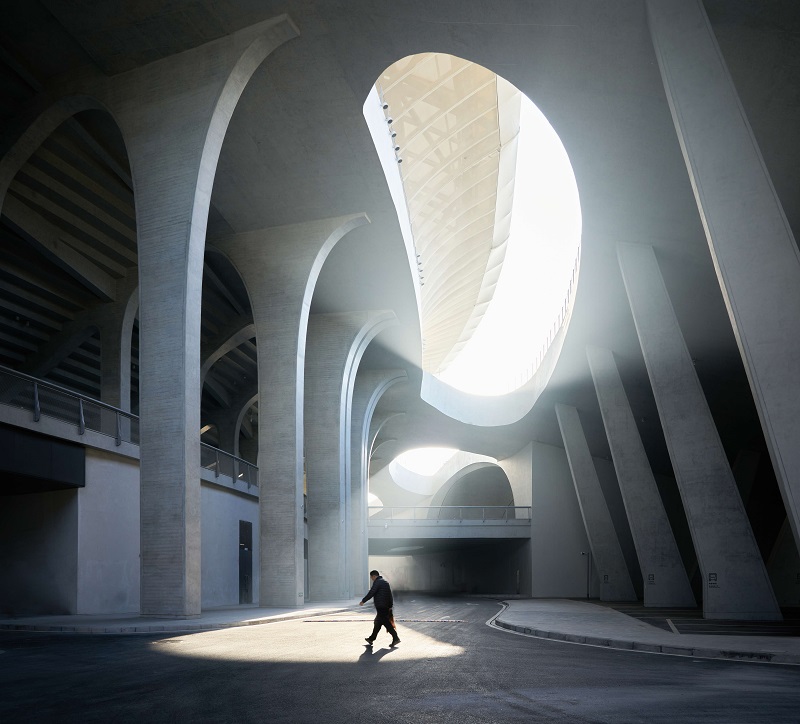
Quzhou Stadium, photo taken by Aogvision. Image credit: MAD Architects.
How do you view nature and how does this influence your designs?
We all need nature, air, greenery, light. Nature has always been important to us, and it is connected deeply to our spirits.
But when you talk about the spiritual quality of nature, that is beyond the physical. Like the traditional Shanshui painting that reflects artists’ own imagination, their own spirits, and their own understanding of their lives, so nature can also have a strong cultural and spiritual meaning as well.
You see such qualities in traditional Chinese and Japanese gardens. I grew up near the Forbidden City in Beijing. Here, you have the natural elements with the artificial structures and buildings. Yet, there is a lot of beauty and harmony here, a poetic feeling from such scenery in these spaces.
In my designs, I hope to create such scenes that can express our imagination of the larger universe, our connection to the sky and the ocean.
Tell us more about some of your projects that evoke such qualities.
One of them is the Quzhou Sports Park in the historic Quzhou city, in Zhejiang province, which is still under construction. Instead of creating just a series of large sports facilities, we wanted to look at it as a park. And more than a park, the overall shape of it is like art, like a green mountain, a volcano.
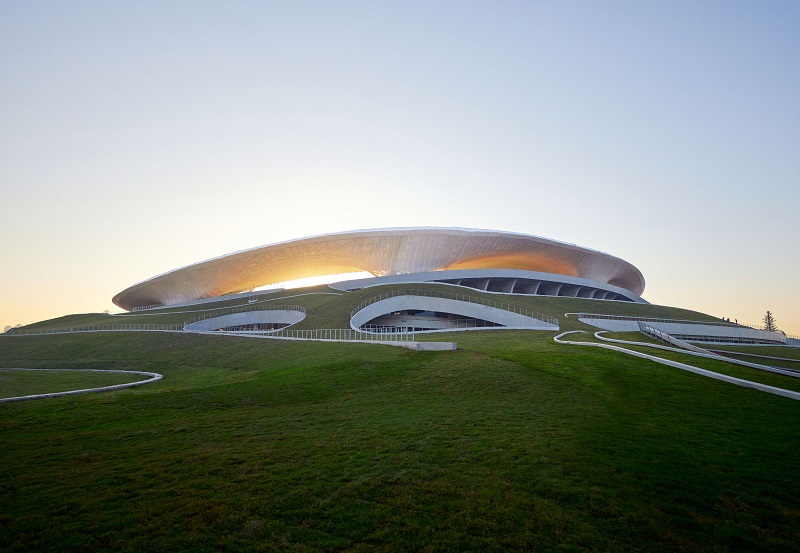
Quzhou Stadium, photo taken by Aogvision. Image credit: MAD Architects.
The building is covered by nature but the form itself is artificial. Although people can experience the natural elements as they walk around and climb the terrain, but there is something surreal about the space. Such is the quality and experience we are trying to create, and this is important to me.
Beyond just a sport facility, we are also providing nature and open spaces for the city and such spaces also have a spiritual quality. When you go there, you find that it is special.
Another project is the Lucas Museum of Narrative Art in Los Angeles. It is also under construction and will be completed in two years. It has a strong shape that is organic and fluid. At the same time, it is shapeless. It makes the architecture feel less like a machine and more as a form to invite the human reaction.
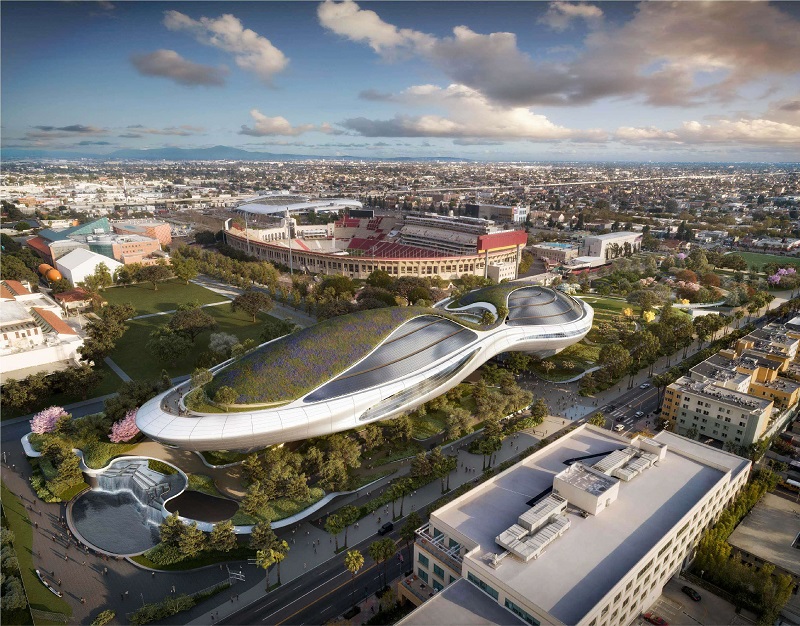
Aerial rendering of the Lucas Museum of Narrative Art. Image credit: Lucas Museum of Narrative Art.
It feels like in architecture, you are creating scenes, much like the movies.
When I think about architecture, I always think about the movies. I wanted to be a film maker when I was in middle school. As a director, you can imagine and turn something into a visual reality that people can believe in. But later, I realise as an architect, you can do the same. Architecture is about the future. The future is not fixed. We can imagine how the future could be.
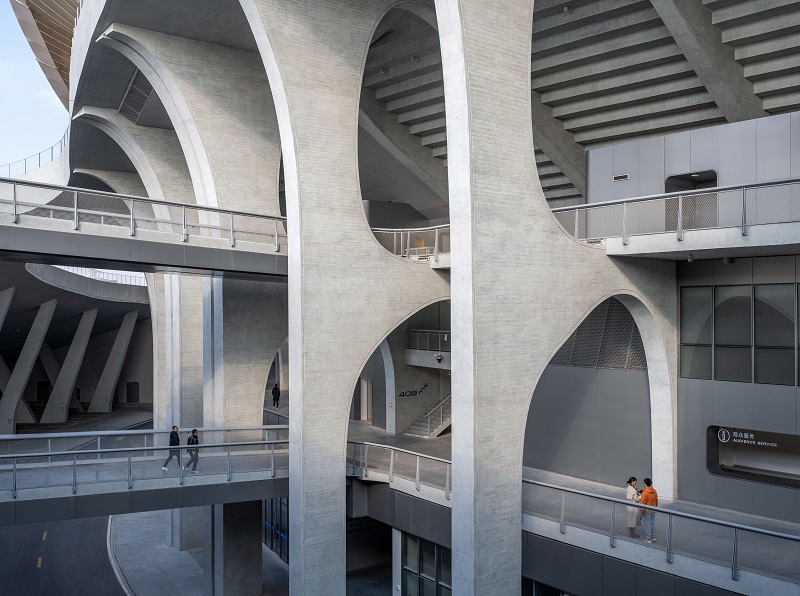
Image by CreatAR Images. Image credit: MAD Architects.
Looking into the future, what should be our focus in creating sustainable cities?
We should place the highest priority on creating architecture with emotional qualities. No matter how much green you put in buildings and whether you create grand or functional spaces, all these will become outdated eventually.
What makes a city sustainable is its cultural sustainability. That is the real quality of a city over time.
So, how can architecture extend and expand our experience?
If you take a traditional garden for example, it could be big and private. There may be some nature or a house. But the physical space is limited. The time in our lives is also limited.
To me, good architecture is not just about providing a space; it is also about providing quality in the way that we live. Architecture can expand our sense of time and space into a much larger world. Our imagination and curiosity are important. Beyond the modern city fulfilling our practical needs, how can we bring spiritual quality into our public spaces?
Through well-designed spaces around us, we can extend our emotions, our reactions to environments and to enjoy the beauty of things around us. We can imagine and create a bigger world and universe. That contributes to the quality of our life.
What is one building that you find most fascinating?
This would be the Salk Institute for Biological Studies by Louis Kahn. The layout has a western order and geometry while the experience of the spaces is quite oriental. You see the ocean, the sky and yourself in the middle.
The spaces make you feel like you are beyond the present. The space has a quality that can inspire people in the past, present and future. I imagine that 500 years from today, if this is still around, people would still feel something.
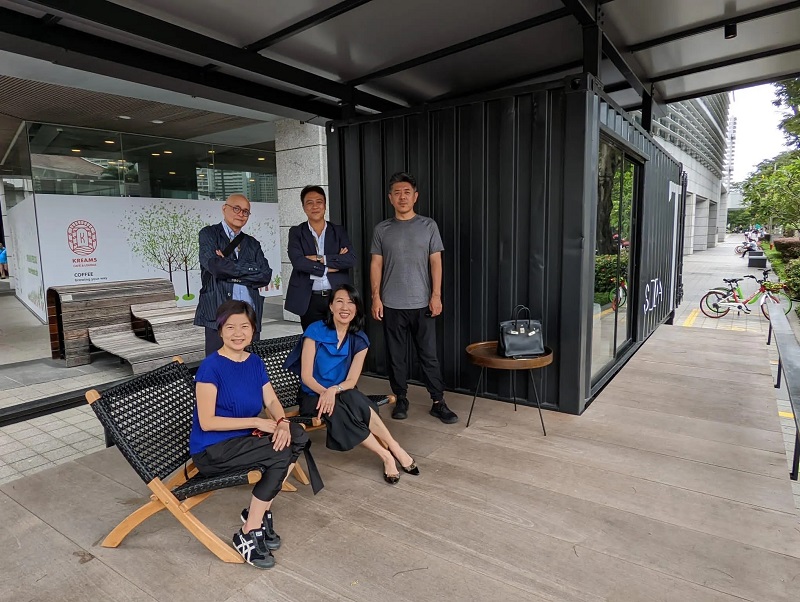
Ma Yansong (in grey t-shirt) with other Jury Members of the Architecture Panel and URA Group Director of Architecture and Urban Design.
Ma Yansong is the 2023 President*s Design Award (P*DA) Jury Member of the Architecture Panel. This interview is part of a series with P*DA Jury Members to explore the importance of design and its potential impact on our lives.
About Ma Yansong
Ma Yansong is the founder and principal of MAD Architects, leading design across various scales. Many of Ma’s designs follow his conception of the “Shanshui City”, which is his vision to create a new balance among society, the city and the environment through architecture. At MAD, Ma has created a series of imaginative works, including the Absolute Towers, Harbin Opera House, Beijing Chaoyang Park Plaza, Paris UNIC, Rotterdam FENIX Museum of Migration, etc.
The President*s Design Award is Singapore’s highest honour for designers and designs across all disciplines. For more information about the award, go to https://pda.designsingapore.org/presidents-design-award/
___
Thumbnail image credit: Photo by CreatAR Images, MAD Architects.


